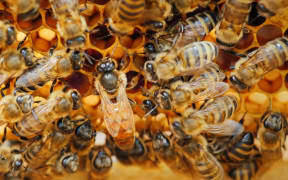
Photo:
More than 3000 beehives had to be destroyed in the year to May 2022, as the honey industry responded to record high cases of American Foulbrood disease.
American Foulbrood weakens and kills honey bee colonies and once they become infected they never recover.
New Zealand has been trying to eliminate AFB since 1998 and as part of the industry's national pest management strategy, infected hives have to be burned.
The National American Foulbrood Pest Management Plan's compliance manager Clifton King said in the 12 months to May 2022 there were 3422 cases reported, compared to 2526 cases the 12 months prior.
The latest figures meant approximately one out of every 200 colonies in New Zealand had been impacted.
That was the highest number of cases reported since the pest management plan began 25 years ago, while the overall percentage of colonies that were infected in the year to May 2022 was on par with levels seen in 2002.
King said one of the key factors driving the increase was that the beekeepers had been going through "hard times" financially, which appeared to be impacting the amount of resources going into disease control efforts.
Another reason for the higher number of cases was increased monitoring as part of new export requirements to China, King said.
"We believe that made commercial beekeepers more motivated to find AFB so that their honey is free [from AFB], and they can export to China."
To keep on top of the disease beekeepers need to inspect their hives regularly, he said.
"The increase is concerning, but the key messages are still the same, it's important that beekeepers know how to eliminate AFB."
There were training and courses available so people can learn what AFB symptoms to look for and how to prevent spread, King said.




